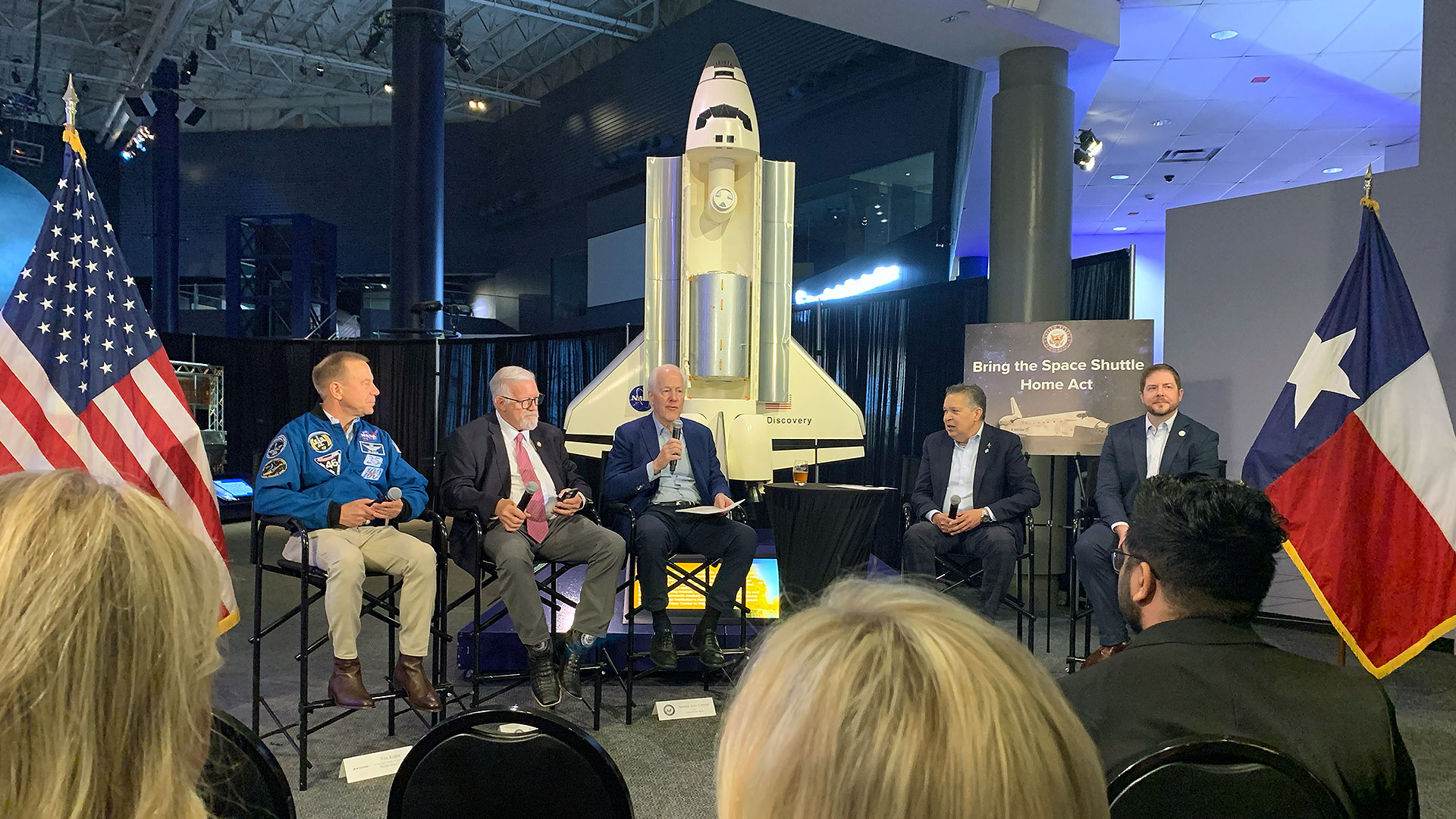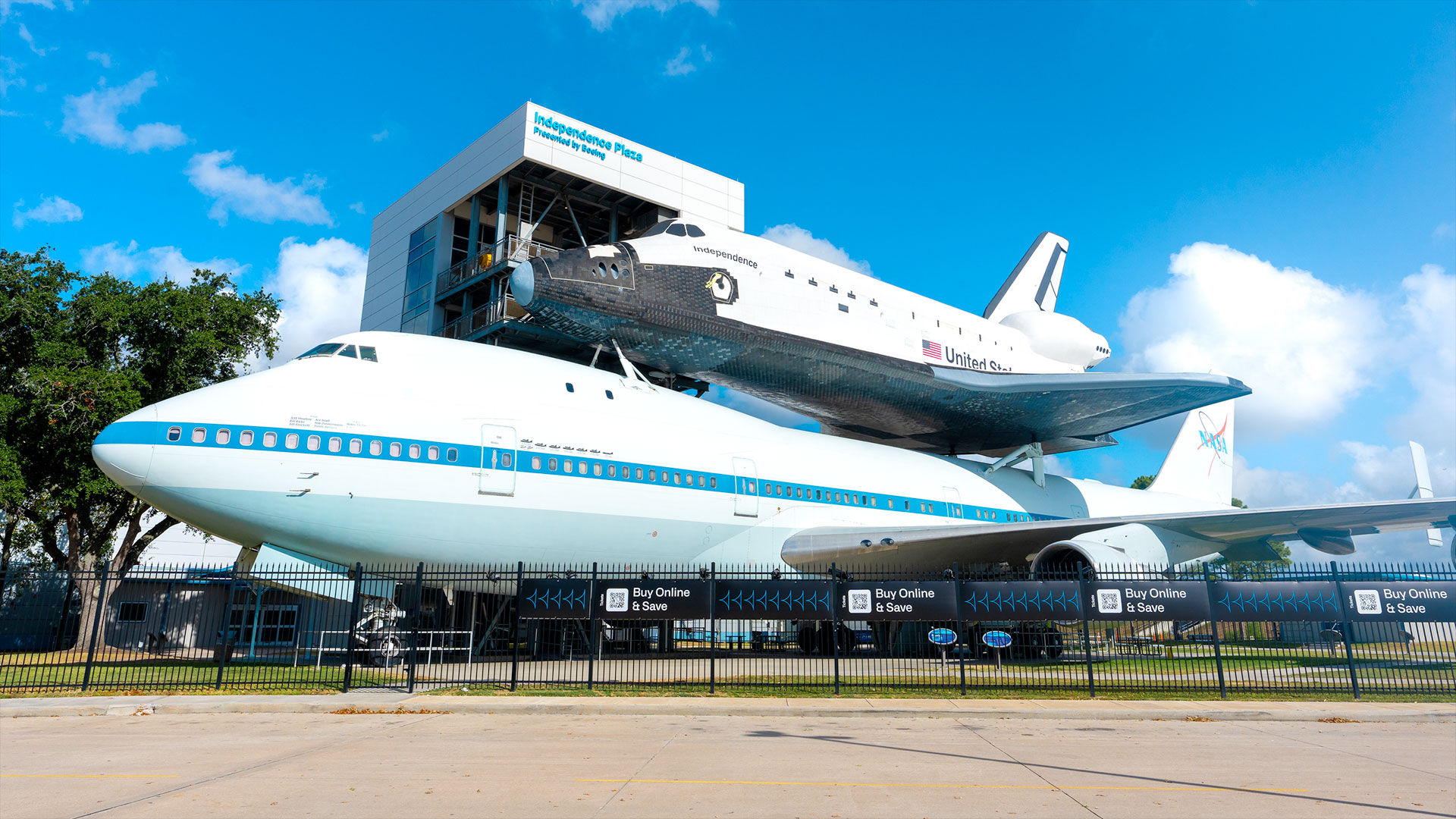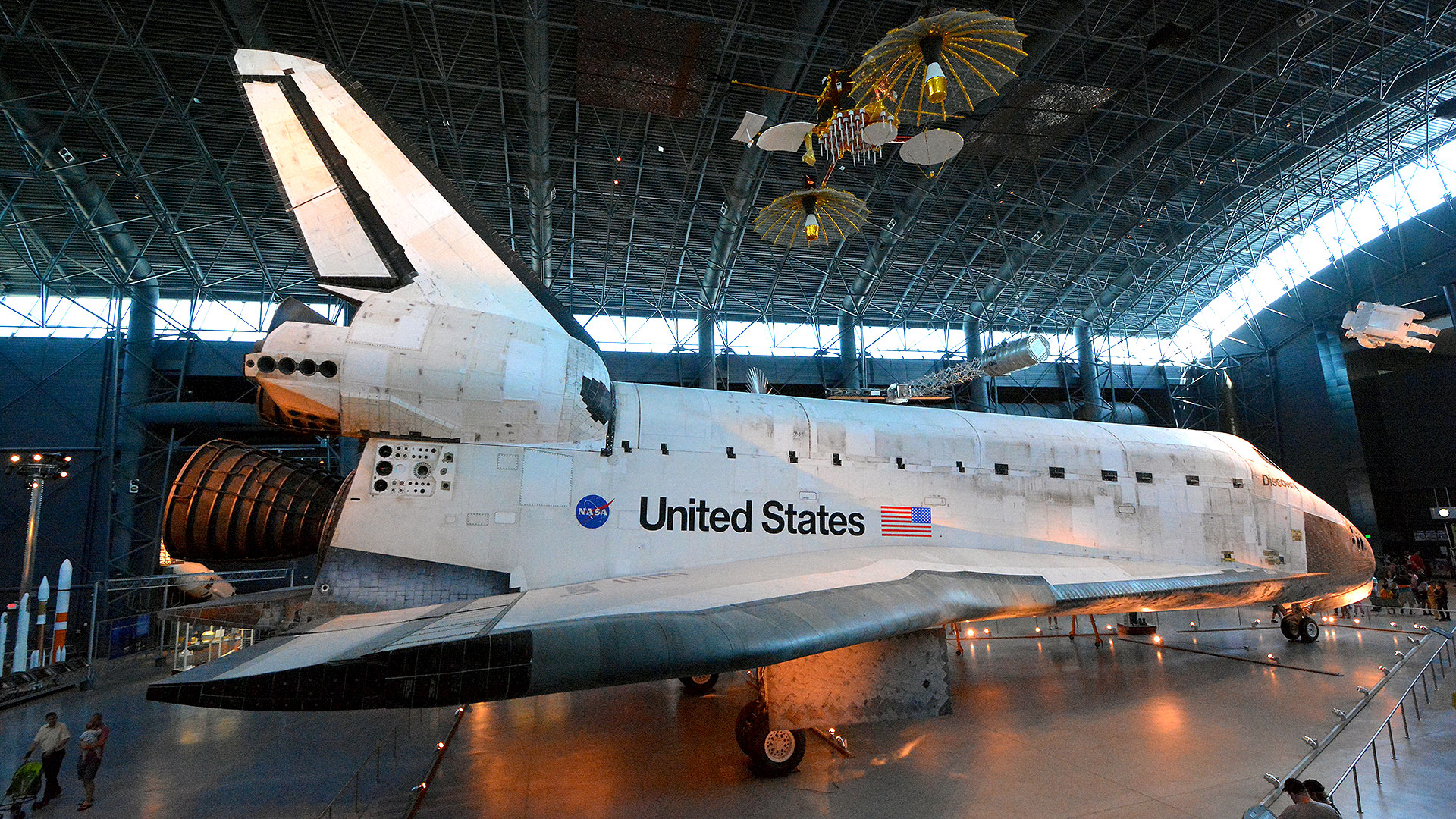On July 4, 2006, NASA's space shuttle Discovery launched on a "return to flight" mission that paved the way for it and its sister ships to fly for another five years. Now, a sprawling budget enacted on Independence Day will seemingly lead to Discovery lifting off again — though this time not into space, but rather from its place in the national collection.
President Donald Trump signed into law the so-called "One Big Beautiful Bill" today (July 4), a day after the legislation was narrowly passed out of Congress with only Republican support. Deep within the 900-page bill is a provision added by Texas' senators to transfer a "space vehicle" to a NASA center "involved in the administration of the Commercial Crew Program" and "placed on public exhibition at an entity within the Metropolitan Statistical Area where such center is located."
The vague language, written in such a way to skirt Senate restrictions on reconciliation bills, was aimed at achieving the "Bring the Space Shuttle Home Act" introduced by Senators Ted Cruz and John Cornyn in April.

"It's long overdue for Space City to receive the recognition it deserves by bringing the space shuttle Discovery home," said Cornyn in a statement released after the Senate passed its version of the bill in a vote of 50 to 50, with Vice President J.D. Vance breaking the tie.
"Houston has long stood at the heart of America's human spaceflight program, and this legislation rightly honors that legacy," said Cruz, who chairs the Senate Committee on Commerce, Science, & Transportation. "It ensures that any future transfer of a flown, crewed space vehicle will prioritize locations that have played a direct and vital role in our nation's manned space program, making Houston, Texas, a leading candidate."
"Bringing such a historic space vehicle to the region would underscore the city's indispensable contributions to our space missions, highlight the strength of America's commercial space partnerships, and inspire future generations of engineers, scientists, and pioneers who will carry our legacy of American leadership in space," he said.
The bill allocates $85 million to move Discovery from the its display home of the past 13 years, the Smithsonian National Air and Space Museum's Steven F. Udvar-Hazy Center in Chantilly, Virginia, to Space Center Houston, the official visitor center for NASA's Johnson Space Center in Texas. "No less than $5 million" is earmarked for the transportation of the winged orbiter, with the remainder going towards the "construction of a facility to house the space vehicle."
Per the bill, the move of space shuttle Discovery must be completed by Jan. 4, 2027. It does not stipulate how the orbiter should be moved. It is not clear if the $85 million will be enough to cover the transfer and display, given that the first time the retired shuttles were brought to their museum homes in 2012, the cost for just the preparation and delivery of each vehicle was $28.8 million, which did not include ground transportation to the museum.
Discovery is the United States' most flown spacecraft in history, with 39 missions between 1984 and 2011. In the process of retiring the shuttle fleet, Discovery was identified by NASA as the "vehicle of record," such that it was kept more intact than Atlantis or Endeavour for the purpose of serving as engineering example at the Smithsonian.

Space Center Houston has not released any details as of yet about how or where it will display Discovery, other than to say it fits into its strategic plans moving forward. The center already exhibits a mock, walkthrough space shuttle, "Independence," mounted atop NASA''s original modified Boeing 747 Shuttle Carrier Aircraft, "NASA 905."
A 2011 investigation by the NASA Office of the Inspector General found "no evidence that the White House, politics or any other outside force improperly influenced the selection decision" of where the space shuttles were originally awarded by the space agency. It is unclear if there are any further actions the Smithsonian or other entities could take to halt Discovery's transfer.
.png)
 German (DE)
German (DE)  English (US)
English (US)  Spanish (ES)
Spanish (ES)  French (FR)
French (FR)  Hindi (IN)
Hindi (IN)  Italian (IT)
Italian (IT)  Russian (RU)
Russian (RU) 









Comments